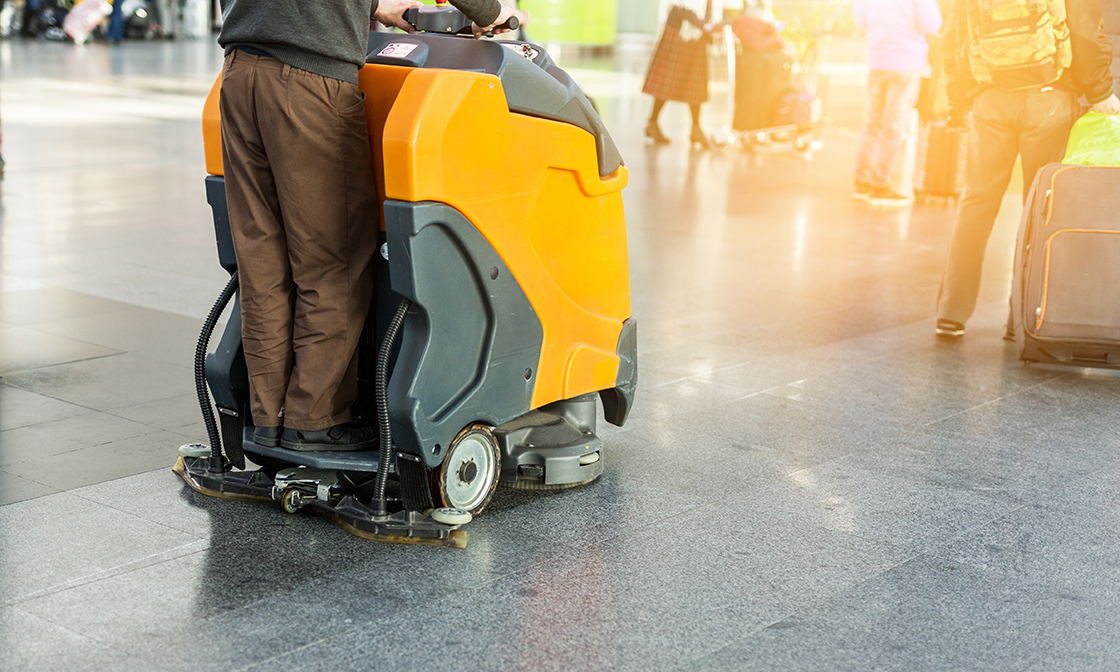Large, high-traffic facilities, like retail stores, face numerous floor care challenges while dealing with fewer resources. Although a new floor care machine may have a high initial investment cost, it provides numerous benefits for employees, facilities and your business’ bottom line.
Floor Care Challenges
Proper floor care requires a careful balance between factors like unique traffic patterns, seasonal issues such as ice, snow, salt and sand, various substrates and finishes and surface changes such as upward or downward slants. Machine operators must match chemicals, squeegees, brushes and floor pads to the task to maximize cleaning performance and efficiency.
However, the retail industry has high turnover rates, making it difficult to continuously train new employees on how to correctly prepare, operate and maintain floor care equipment.
Budget constraints also present challenges, and may mean that the time between restripping, recoating and burnishing is extended. However, regular floor maintenance helps reduce costs and downtime associated with floor replacement.
Floor Care Machine Considerations
Finding a floor care machine that best fits your business and budget is crucial. Before making a purchase, ask yourself what types of substrates you need to clean, how frequently the machine will be used and how the expense of the machine will be managed (purchased vs. leased).
Then, look for a machine that is:
- Simple and intuitive. It should be easy for operators to switch out squeegees, brushes and floor pads and all tools should have wear indicators so that operators know when they need replacing. Icon-driven controls help assist in overcoming language barriers while automatic shut-offs can protect employees and the machine in unsafe conditions.
- Equipped with speed-controlled solution dosing. A typical machine has a specific flow rate and dispenses chemical approximately every minute, regardless of its speed. Today, select machines accommodate for changes in speed during maneuvers such as turning. Speed-controlled solution dosing eliminates chemical waste and reduces labor costs because operators don’t have to fill the machine’s tank as often.
- Equipped with an advanced squeegee. Operators shouldn’t have to manually adjust the pressure that the squeegee has with the floor to account for changes in floor surfaces or angles. The squeegee should be pick up the water and chemical dispensed onto floors and be durable.
- Able to share machine tracking data. Machine tracking devices allow you to set a perimeter and receive alerts when the machine leaves a predetermined area. You can also see which machines have low battery levels, whether the machine is being operated and whether it has collided with a wall or other object.
In addition to stand-on, walk-behind and ride-on machines, organizations may want to consider hands-free machines that clean floors autonomously at the push of a button. These robotic machines allow employees to focus on other key cleaning tasks while floor care is being completed.
The right floor care machine coupled with a comprehensive training program can improve facility cleanliness while enhancing employee satisfaction and reducing labor, maintenance and chemical costs.
For more information on floor care machines, visit our TASKI Machines page.



